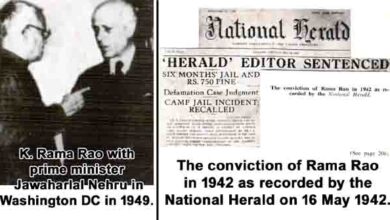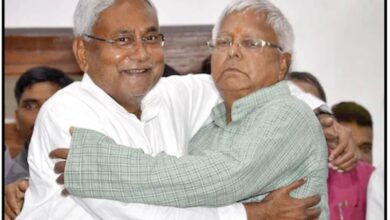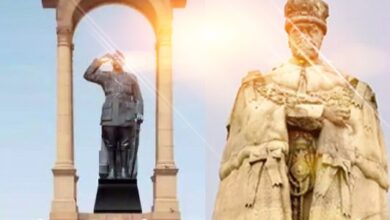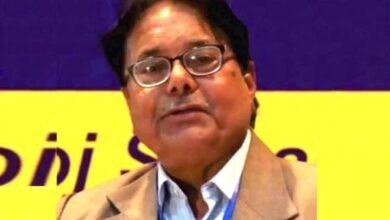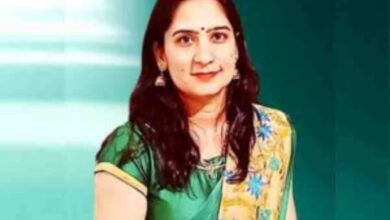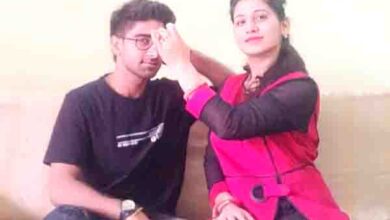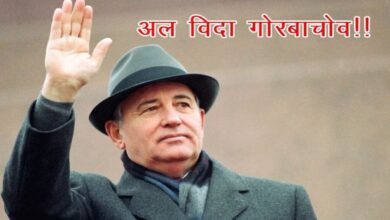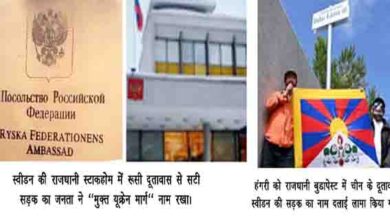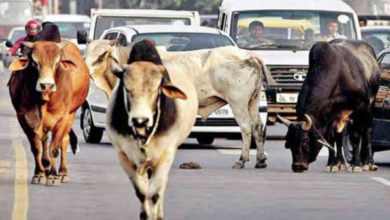दलित इतिहास का पुनर्मूल्यांकन dalit itihaas ka punarmoolyaankan
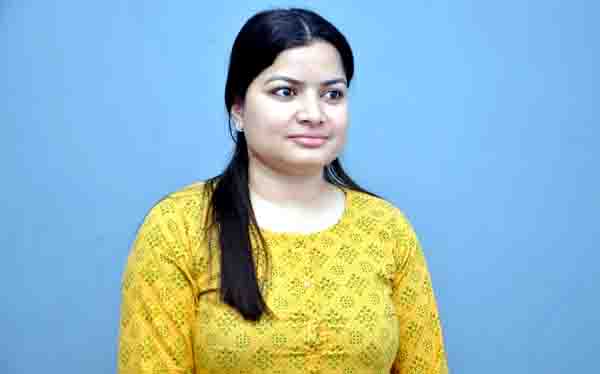
©डॉ. ममता
परिचय– गढ़वाल, उत्तराखंड
साहित्य मनुष्य जीवन की एक आवश्यक और महत्त्वपूर्ण उपलब्धि है। साहित्य समाज के रूप को शब्दबद्ध कर उसे विस्तार देता है। समाज के प्रत्येक वर्ग, जाति, लिंग, धर्म और समुदायों के लोगों के भावों की अभिव्यक्ति साहित्य की किसी न किसी विधा में अवश्य हुई है।
शोषित और शोषक, समाज के दो वर्ग हैं जिसका आधार जाति, धर्म, आर्थिक असमानता के अलावा घृणा, द्वेष, लालच, जैसे भावों के कारण रहता है तथा इन्ही सभी कारणों ने साहित्य लेखन में वृद्धि की। समाज में प्रेम और सद्भाव की कामना के साथ लिखा गया साहित्य, अपनी मजबूत पकड़ बनाए रखता है क्योंकि यह समाज को आगे बढ़ने की प्रेरणा देता है।
हालांकि यह तभी सभंव है जब साहित्यकार ईमानदारी से समाज का यथार्थ साहित्य में दिखाते रहें। दलित साहित्य का उद्देश्य समाज में किस प्रकार के साहित्य का निर्माण करना है तथा वह कहाँ तक इस दिशा में सफल हो पाया है, इसकी चर्चा करता हुआ आज दलित विमर्श भी साहित्य में मौजूद है।
उल्लेखनीय है कि दलित समाज जो वर्ण व्यवस्था के कारण कर्म व्यवस्था पर आधारित था उससे विकसित होकर जातिव्यवस्था के अंतर्गत उसे सबसे निचले पायदान पर आंका जाता है, जिस कारण समाज में उसे वर्षों से उपेक्षा और अपमान झेलना पड़ा।
इस जाति व्यवस्था के अंतर्गत माना जाता है कि दलित व्यक्ति को कुछ निर्धारित स्थानों पर जाना वर्जित है। ब्राह्मण को न्यायकर्त्ता के रूप में यह समाज पद्धति स्थापित करती हुई दिखती है जिसका आधार योग्यता नहीं बल्कि जिस जाति विशेष में मनुष्य ने जन्म लिया है वही निर्धारित करती है।
जैसे किसी मंदिर का पुजारी बनने की योग्यता केवल किसी ब्राह्मण जाति में पैदा होना ही है तो वहीं मैला ढोने का काम करने के लिए दलित जाति के लोगों को ही मजबूर किया जाता है। स्वतंत्र भारत में दलितों को आरक्षण तथा कुछ कानून हक मिलने से इनकी स्थिति भले ही कुछ हद तक बदली हो परन्तु समाज को बाँटने की यह रीति आज भी चली आ रही है।
आये दिन अखबारों में जातिवाद से शोषित और उत्पीड़न जनता की खबरें प्रकाशित हो रहीं है जो बेहद ही दुखद है। बिहार, यूपी और उतराखंड में कई ऐसे मामले सामने आए हैं जब भोजन सहायकों द्वारा बनाए भोजन को सवर्णों ने खाने से मना कर दिया जिसका प्रमुख कारण भोजन सहायक का दलित जाति से होना था। ऐसी घटनाएं हमें बार-बार स्तबंध करती हैं कि हम कैसे समाज का हिस्सा हैं जहाँ आज भी जातिवाद का जहर फैला हुआ है।
आचार्य रामचंद्र शुक्ल ने हिंदी साहित्य के इतिहास में काल विभाजन किया परन्तु दलित साहित्य के इतिहास व साहित्यकारों को उसमें कितना स्थान मिला? यह प्रश्न जायज है क्योंकि इससे इस बात का पता चलता है कि इतिहास लेखन के दौर में दलित साहित्य की स्वीकारिता कितनी थी?
क्या दलित साहित्य को साहित्य ही नहीं स्वीकारा गया? दलितों द्वारा लिखे इतिहास को आलोचकों ने अस्वीकार ही नहीं किया बल्कि दलित समाज की उपेक्षा को भी यह साफ दिखाता है। हिंदू समाज व्यवस्था के पोषक (ब्राह्मण), शूद्रों और दास-दस्युओं को ही अछूत के रूप में स्वीकार करते चले आये हैं।
इस संदर्भ में पर्याप्त शोध किया गया जिसमें लगातार परंपरागत विचारों का खंडन किया है। जैसा कि हम जानते हैं कि ऋग्वेद में ‘दासट’ शब्द चौवन (54) बार और ‘दस्यु’ 78 बार आया है। आलोचक रामशरण शर्मा अपनी किताब ‘शूद्रों का प्राचीन इतिहास’ में वैदिक काल में शूद्र की सामाजिक और आर्थिक स्थिति के विषय में बताते हैं-“वैदिक काल में, गुलामी या कृषिदासता की दृष्टि से. शूद्रों की स्थिति सुनिश्चित करना कठिन है।
यद्यपि संदर्भों से धारणा बनती है कि मजदूर वर्ग को शूद्र की संज्ञा दी जा रही थी, फिर भी सामान्यतया ऐसा प्रतीत नहीं होता कि वे किसी खास व्यक्ति के गुलाम या कृषिदास थे।” इस उक्त कथन से यह शंका होती है कि क्या उस काल में शूद्र जातियों के साथ भेदभाव पूर्व व्यवहार नहीं था तथा क्या उस समय शूद्र कहीं जाने वाली यह जातियाँ आज की दलित जातियों से भिन्न है?
इन प्रश्नों के हल ढूँढने के प्रयास में यह भी अर्थ निकलता है कि अगर वैदिक काल या परवर्ती कालों में शूद्रों द्वारा किये जा रहे चमड़े के काम के प्रति भी घृणा का भाव समाज में नहीं था तो इससे यह बात लगने लगती है कि बौद्ध काल आते-आते शूद्रों की सामाजिक और आर्थिक स्थिति में काफी बदलाव हुआ।
बौद्ध धर्म में प्रचलित कथा तथा रवीन्द्रनाथ द्वारा लिखा नाटक ‘चाण्डालिका’ जिसमें बुद्ध के शिष्य आनंद द्वारा अछूत समाज की चांडालिका के भीतर हीनता बोध को खत्म किया गया। यह कथा यह संकेत देती है कि बौद्ध काल में समाज में छुआछूत जैसी प्रथा थी, जिसे बौद्ध भिषुओं द्वारा समाप्त करने का प्रयास किया गया।
इसके अलावा बुद्धदेव का यह कथन भी यह स्पष्ट करता है कि शूद्रों के साथ समाज की विभेदकारी रीति उस काल में उपस्थित थी, जिस कारण से बुद्धदेव इस पर अपने मंतव्य प्रस्तुत करते हुए कहते हैं- “जिस प्रकार राजा या राज्यक्षेत्र के स्वामी के लिए सारा राजस्व अपने ही हित में लगाना श्रेयस्कर नहीं है, उसी प्रकार ब्राह्मण या श्रमण का सारे ज्ञान पर एकाधिकार कर लेना उचित नहीं।”
इस कथन से दो बाते स्पष्ट होती हैं कि शूद्रों की स्थिति उस समय ऐसी थी कि उन्हें ज्ञान प्राप्ति का अधिकार नहीं था। दूसरा यह कि उस काल में ‘ब्राह्मण’ शब्द का प्रयोग होता था तभी इस कथन में बुद्धदेव ब्राह्मण शब्द का प्रयोग करते हैं। जिससे यह अनुमान लगाया जा सकता है कि वर्ण-व्यवस्था उस समय थी।
इस कथन की व्याख्या में भी रामशरण शर्मा, अध्यापक बनने के लिए चंडालों को भी अवसर देने की बात कहते हैं। इसके अलावा बौद्ध काल में शूद्र जातियों के साथ भेदभाव का जिक्र करते हैं। जिन्हें अंत्य या बाह्य कहकर गाँव या नगर से बाहर रखा जाता था। इनका आश्रय गाँव के बाहरी छोर पर होता था जिन्हें अस्पृश्य मानकर ब्राह्मणों ने आबादी से दूर कर दिया।
डॉ श्यौराज सिंह समाज में आए बदलावों को देखते हुए आज भी दलितों का शोषक सवर्ण समाज को मानते हैं। वे लिखते हैं- “समाज, साहित्यिक और परिस्थितियों में लगातार परिवर्तन होता रहा है उसी तरह दलितों की पहचान बदलती रही है, परंतु हर युग में उन्हें सवर्णों से संघर्ष करना पड़ता रहा है।”
रामशरण वर्मा अस्पृश्यों की उत्पत्ति के कारणों की खोज में कई व्याख्याओं से गुजरे। पहली व्याख्या यह थी कि अस्पृश्य जातियाँ वह थी जो विभिन्न जातियों से उत्पन्न हुई, जिसे आलोचक ने सरे से नकार दिया। दूसरी व्याख्या में कहा गया कि जिन लोगों ने गोमांस खाया वह अछूत करार दिए गये, परन्तु इस व्याख्या पर संदेह करते हुए आलोचक कहते हैं कि ब्राह्मणों द्वारा गौ मांस न खाने की बात मात्र ‘गौतम धर्मसूत्र’ में मिलती है, इसके अलावा किसी भी ग्रंथ में यह बात नहीं कही गयी।
तीसरी व्याख्या करते हुए आलोचक बताते हैं कि अस्पृश्य द्रविड़ मूल के थे जिस कारण से आर्य मूल के कहे जाने वाले ब्राह्मण उनसे घृणा करते थे, इस व्याख्या को भी आलोचक रामशरण शर्मा ने खारिच करते हुए कहा है- “इसका कोई प्रमाण नहीं मिलता कि ब्राह्मणप्रधान समाज में द्रविडों के आत्मसात्करण के पहले, उनके द्वारा ब्राह्मणवाद के अंगीकार के पहले दक्षिण में अस्पृश्यता प्रचलित थी।”
हालांकि हाल के वर्षों में हुए शोध के जरिये यह पता लगाया गया है कि भारत के मूल निवासियों का डी.एन.ए द्रविड़ जातियों से मिलता है और इसके अलावा भारतीय धर्म ग्रंथों में राक्षस की तुलना द्रविड़ों के रूप-आकार से करना, उन्हें कदाचित आर्यो के नायकों के विरोधी दिखाकर प्रस्तुत किया जाता है, जो द्रविड़ और आर्यों के बीच के मतभेदों की तरफ इशारा करता है।
‘यूरेशिया अनुसंधान रिपोर्ट’ में यह बताया है कि ऊँचे वर्ण के पुरुष मूल भारतीय नहीं है। संचित धनवे अपने लेख में विचारणीय तथ्यों को प्रस्तुत करते हुए लिखते हैं कि- “ अनुसंधान यह साबित करता है कि, ऊँचे जाति के लोगों की बजाए भारत के निचली जाति के लोग आदिवासी लोगों से अधिक जुड़ते हैं एवं समान है। याने अन्य पिछड़ी जाति एवं अनुसूचित जाति लोगों का उद्गम आदिवासी लोगों में से ही हुआ है।
फिलहाल ऊँचे वर्ण के लोगों में थोड़ी बहुत मात्रा में पाये जाने वाले इस ग्रुप के लाईनेज आम तौर पर 3500 सालों पहले वे भारत में आने के बाद हुये मिश्रण का नतीजा है।” श्यौराज सिंह दलित की परिभाषा में दलित को अनार्य, बहिष्कृत, अछूत और अस्पृश्य कहलाने वाली जातियों के रूप में संबोधित करते हुए दलित के व्यापक पर्यायवाची बतातें हैं जो भारतीय समाज में प्रचलित हैं।
एक शब्द अपने मूल शब्द से परिवर्तित होते-होते कुछ का कुछ बन जाता है इसलिए यह जानना कि दलित को क्या-क्या संज्ञा दी गई और शूद्र को आलोचकों ने किस अर्थ में देखा है। वर्ण व्यवस्था में शूद्र जातियों को जो कर्तव्य दिये गए वह न्यायोचित नहीं थे, यह कहना और जानने के लिए उन कई अन्य परिभाषाओं को जानना भी महत्त्वपूर्ण हो जाता है। चांडाल, अंत्य, अंत्जय, हरिजन की एक लंबी यात्रा के बाद दलित की सामाजिक पृष्ठभूमि का आधार बनी। यह तमाम प्रश्न और शंकाएं लाजमी है।
इसलिए ‘दलित’ शब्द की साहित्य और समाज में जब से स्वीकृति हुई, तब से ही इसके अर्थ को जानने का प्रयास शोध में किया जा रहा है ताकि तमाम व्याख्याओं व संभावनाओं के जाल में फँसे बिना ‘दलित’ शब्द के आज के संदर्भ में उपयोगिता को जाना जाये। दलित के आधुनिक रूप को जानने का प्रयास किया जा रहा है। सर्व प्रथम दलित शब्द के सामान्य अर्थ से विशिष्ट की ओर जाते हुए इसके अर्थ को समझने का प्रयास करते हैं।
‘दलित’ शब्द आज काफी चर्चा में है परन्तु इसकी सही-सही और उचित व्याख्या करना अभी भी संभव नहीं हो पाया है। ‘दलित’ शब्द को समझने के लिए हमें इसके कोशीय एवं व्यवहारिक अर्थ को जानना आवश्यक है। किसी शब्द की उत्पत्ति और उसके पीछे छिपे इतिहास को जाने बिना हम किसी भी शब्द को पारिभाषित नहीं कर सकते।
इसलिए हम विभिन्न कोशों ने दलित शब्द के बारे में क्या-क्या लिखा है। उसके अर्थ के संदर्भ में विभिन्न कोश क्या कहते हैं। सबसे पहले इसको जानना अनिवार्य है। लगभग सभी कोशों में दलित को शोषित के रूप में परिभाषित किया है जो दमित, उत्पीड़ित है जिसका सामाजिक शोषण किया गया है।
दलित पैंथर्स अपने घोषणा पत्र में इसे व्यापक अर्थो में परिभाषित करता है दलित के अर्थ को विस्तार देते हुए आलोचक शैलेश मरजी कदम लिखते हैं – “दलित का अर्थ है अनुसूचित जाति, बौद्ध, कमागार, भूमिहीन, मजदूर, गरीब किसान, खानाबदोश जातियाँ,आदिवासी और नारी समाज।”
कई विद्वान व इतिहासकार यह मानते हैं कि आर्य-अनार्यों के संघर्ष के बाद जो हारे उन्हे बंधी बना लिया गया तथा उन्हे दास, असुर, आदिवासी, दस्यु व शूद्र कहा गया। श्यौराज सिंह बैचेन अपने लेख ‘हिंदू धर्म में दलित’ में इतिहासकार डाँ रामशरण शर्मा के कथन को उद्घृत करते हैं कि- “घुमक्कड़ आर्यों-अनार्यों के बीच भयानक संघर्ष हुआ। दस्यु के पास स्वर्ण, हीरा, जवाहरात भी थे, जिनके चलते आर्यों का मन मचल गया। दस्युओं के रहन-सहन से भी आर्य उनके विरोधी हो गए।” यह संघर्ष इतिहास बदलने में निर्णायक सिद्ध हुआ।
बाहर से आए आर्यों ने बाद के वर्षों में अपने को भारत का मूल निवासी स्थापित करने के लिए कई झूठ फैलाए। शूद्र कही जाने वाली जातियाँ भारत की रक्षक संस्कृति का हिस्सा थी इसलिए डॉ. अंबेडकर इन्हें क्षत्रिय कहते हैं परन्तु यह भी मानतें हैं कि वेदों, उपनिषदों व मनु स्मृति में शूद्र को पाप-पुण्य से जोड़कर देखा तथा समाज में भ्रम फैलाने का प्रयास किया।
डॉ. अंबेडकर कहते हैं कि- “ जिन्हें शूद्र कहा जाता है असल में वह भारत के ‘रक्षक संस्कृति’ के थे जो युद्ध में आर्यों से हारे और अपनी ही धरती पर गुलाम बनकर रह गए”। आधुनिक युग आते-आते शूद्र को ‘दलित’ की संज्ञा मिली तथा डाँ अंबेडकर ने इसे शोषितों का पर्याय बना दिया। और जातिवादी वर्ण-व्यवस्था पर टिकी है।
समाज के अन्य वर्ग, जाति, समुदायों से पूछा जाये कि दलित किसे कहा जाता है तो सामान्यत:; वह रंग को आधार बनाकर दलितों की व्याख्या करते हैं। ‘अवर्ण’ अर्थात वर्ण से हीन जिसे सामान्य अर्थों में काला व्यक्ति भी कहा जाता है।
भारत तथा विदेशों में भी रंग के आधार भेदभाव होता है। स्त्री के सौंदर्य व गुणों का मूल्यांकन बिना किसी मजबूत प्रमाण के स्वीकार कर लिया जाता है कि सवर्ण रंग की स्त्री कुशल तथा गुणवान है तथा वहीं अवर्ण लड़की, घर के लिए अनुपयुक्त और वधू के रूप में अयोग्य सिद्ध की जाती है। ऐसी कितनी ही भ्रांतियाँ हमारे समाज में देखने को मिलती है।
अवर्ण, अयोग्य, हीन, कमजोर व धर्म की दृष्टि में उपेक्षित माने गए वहीं सवर्ण सर्वगुणसंपन्न, बलवान तथा देव तुल्य समझे जाते हैं इसलिए ‘अवर्ण’ दलित जाति के लिए उपयुक्त शब्द नहीं है इसमें कई पूर्व आधारित अर्थ समाहित हैं जो दलित विरोधी, प्रतिगामी, व्यवस्था विरोधी, सामंत विरोधी तथा धर्म विरोधी तत्वों को सही ढंग से प्रस्तुत नहीं कर सकता।
दलित जातियों को अवर्ण कहकर भी संबोधित किया जाता है, कहा जा सकता है कि दलित साहित्य भी अवर्ण समाज के विरोध का साहित्य है जिसमें उनकी अवर्ण समाज के जीवन शैली व परंपरा से जुड़ा शब्द है। वर्ण व्यवस्था के संदर्भ में अवर्ण के अर्थ को देखते हुए डॉ. वतिका प्रसाद मरमट का विचार उल्लेखनीय है- ‘सवर्ण का एक अर्थ एक रंग वाले समाज के रूप में भी आया है ।
अवर्ण समाज का जिक्र इस संदर्भ में हुआ है कि जो ब्राहमण, क्षत्रिय और वैश्य आदि में से किसी भी वर्ण का न हो अर्थात जिसका कोई वर्ण या रंग न हो । अवर्ण का एक अर्थ वर्ण-धर्म-रहित के रूप में भी लिया गया है तथा उसे ब्राहमण आदि धर्म से शून्य माना जाता है’अवर्ण अर्थात जिसे चार वर्णों के बाहर भी माना गया । इतिहास में दलितों को पंचम वर्ण के रूप में भी संबोधित किया गया है।
दलित की व्याख्या डाँ अंबेडकर शोषित जाति के रूप में करते हैं वह शूद्र व अछूत शब्द की जगह शोषित जाति (Depressed caste) का प्रयोग करते हैं, डॉ. अंबेडकर ने भी इसी शब्द का प्रयोग किया है। डाँ तेज सिहं इतिहास की घटना का जिक्र करते हुए कहते हैं कि- “व्यापक सामाजिक–सांस्कृतिक आधार वाले दलित वर्ग को अस्पृश्यों का पर्याय बना दिया गया और भारत सरकार ने भारत सरकार अधिनियम 1935 की एक अनुसूची में अस्पृश्यों को अनुसूचित जातियों के रूप में चिह्नित कर दिया गया।
इसके बाद डॉ. बी. आर.अंबेडकर द्वारा सामाजिक–आर्थिक स्तर पर शोषित उत्पीड़ित तबकों के लिए व्यापक अर्थ में दलित वर्ग संघ की स्थापना हुई।” हिंदीं फिल्म ‘काला’ में भी काला या अवर्ण रंग श्रम का प्रतीक के रूप में देखा गया है। शब्दों के जाल में फँसकर हम अपनी मूलचेतना को नहीं भूला सकते।
डॉ. धर्मवीर अपने लेख “दलित साहित्य की परिभाषा: समग्रता और पूर्णता की ओर“ में कहते हैं कि- “यह कहना किसी भी दलित का मूल अधिकार है कि वह हिंदू वर्ण-व्यवस्था का अंग नही है।“ जिस दिन दलित समाज यह स्वीकार कर लेगा कि वह हिंदू धर्म के अंतर्गत नहीं आता उस दिन सही मायने में उसमें ज्ञान का संचार हो जाएगा। कुछ दशकों पूर्व आज का दलित समाज हिंदू धर्म का हिस्सा नहीं था। जिस देश का इतिहास हिंदू इतिहास नहीं था वह हिंदू घोषित हो गया।
जो विचार परंपरा मान ली गई वह ब्राह्मण ने बनाई जिसका भारतीय सामाजिक व्यवस्था पर एकाधिकार रहा क्योंकि इस व्यवस्था को बनाने व पोषित करने वाला ब्राह्मण ही था। मुद्राराक्षस मानते हैं कि भारतीय उप-महाद्वीप का ऐतिहासिक-सामाजिक-सांस्कृतिक चित्र आज तक दुनिया ने जो देखा जो ब्राह्मण ने दिखाना चाहा।
आलोचक धर्मवीर द्वारा कही गई यह बात कि दलित हिंदू नहीं है कि पुष्टि आलोचक मुद्राराक्षस करते हुए कहते हैं कि- “सन 1911 की जनगणना के समय पहली बार ब्राह्मण नेताओं ने अंगरेज सरकार पर दबाव डाला कि सभी कायस्थ, पिछड़े, आदिवासी हिंदू लिखे जाएँ। भारतीय इतिहास की यह छोटी घटना है। संस्कृति के इतिहास में यह मामूली-सा दिखने वाला हेरफेर इस देश की ऐतिहासिक वास्तविकता को ध्वस्त करने में कामयाब हो गयी।”
यह तथ्य दलित समाज को उनका इतिहास बताता है तथा स्वार्थी ब्राह्मण वर्ग की चालाकियों की पोल भी खोलता है। भारत में अल्पसंख्यक शब्द के नाम पर की गई घपलेबाजी हो या भारत को हिंदू बहुल राष्ट्र कहलवाने के पीछे गहरी साजिश का होना, यह तथ्य इन सभी प्रश्नों का उत्तर देता है।
ओमप्रकाश वाल्मीकि कहते हैं कि नवजागरण और स्वतंत्रता-संघर्ष के समय हिंदी साहित्य और राजनीतिक हलचलों के बीच जो राष्ट्र विकसित हो रहा था वह वास्तविक आज़ादी की राह नहीं दिखा रहा था इस बात पर प्रकाश डालने के लिए वह ज्योतिबा फुले का एक उद्धरण देते हैं जिसमें ज्योतिबा फुले कहते है- “एक ऐसा समाज जो जातियों में बुरी तरह बँटा है, वास्तव में वे इसे तोड़ने वाले लोग हैं।
वे इसके संस्थागत रूप को भूलकर अपने आपकी शक्ति के आधार पर इसका निर्माण करने का प्रयास कर रहें हैं।” धार्मिक ग्रंथों में संस्कृति को सर्वोपरि व सर्वश्रेष्ठ मानकर समाज में बँटवारा कर शोषण की परंपरा को रोकने के लिए वैज्ञानिक दृष्टिकोण की आवश्यकता है जबकि भारतीय संस्कृति का तर्क और वैज्ञानिक दृष्टि से कोई लेना देना नहीं है बल्कि वह तो अविवेक, अंधविश्वास दलित साहित्य की विचारधारा में ब्राह्मणवाद का विरोध, अम्बेडकरवाद का प्रभाव, बौद्धों का भौतिकवादी दर्शन की छाप, वैज्ञानिक दृष्टिकोण की स्वीकार्यता तथा दलित विरोधी मानसिकता का खंडन करना शामिल है।
डॉ अम्बेडकर और ज्योतिबा फुले ने दलितों को जो विचार और विवेक दिया वह ही दलित के अधिकारों को दिलाने में सहायक सिद्ध होगी। यह सभी तथ्य यह बताते हैं कि किसी व्यक्ति और समाज के इतिहास को जाने बिना उसके अधिकारों की लड़ाई लड़ना तथा परिवर्तन की लौ जलाना आसान नहीं है तथा शोषित समाज को कूप अंधकार से दूर करने के लिए यह आवश्यक भी है।
संदर्भ सूची-
- शूद्रों का प्राचीन इतिहास, रामशरण शर्मा, राजकमल प्रकाशन, पृ.सं 53
- शूद्रों का प्राचीन इतिहास, रामशरण शर्मा, राजकमल प्रकाशन, पृ.सं 123
- दलित चेतना और स्त्री विमर्श, संपादक-विजय कुमार ‘संदेशु’ एवं डॉ नामदेव, क्लासिकल पब्लिशिंग, प्रसं-2009, पृ.सं 33
- शूद्रों का प्राचीन इतिहास, रामशरण शर्मा, राजकमल प्रकाशन, पृ.सं122
- डीएनए अनुसंधान की सहायता से मूलनिवासी की खोज (लेख), लेखक-संचित धनवे, ‘विदेशी ब्राह्मणों की मातृभूमि: युरेशिया’, संपादक- प्रो. विलास खरात, प्रकाशक-डॉ बाबासाहब आंबेडकर रिसर्च सेंटर, नई दिल्ली, प्र. संस्करण 7 मई 2020, पृ.सं 81
6.शैलेश मरजी कदम, लेख दलित शब्द का उद्भव एक ऐतिहासिक यात्रा,बहुवचन पत्रिका, महाठी साहित्य, विशेषांक,अक्टूबर-दिसंबर 2018 पृ.346-347)
- ओमप्रकाश वाल्मीकि, दलित साहित्य: अनुभव, संघर्ष एवं यथार्थ, राधाकृष्ण पैपरबैक्स, पहला संस्करण 2020, पृ.सं 41
8.दलित साहित्य और युगबोध, संपादक- डॉ. एन सिंह,लता साहित्य सदन, संस्करण- 2005, पृ.सं 15
9.तेज सिंह साहित्य आंदोलन –साहित्य विशेषांक -2009, अतिथि संपादक क्षितिज शर्मा,संपादक –अपूर्व जोशी नोएडा उ.प्र.पृ.117)
- जयप्रकाश कर्दम, दलित साहित्य 1999, पृ.सं 34
11. ‘धर्मग्रंथों का पुनर्पाठ, मुद्राराक्षस, संस्मरण 2016, गौतम बुक सेंटर,पृ.सं11 )
- पत्रिका- दलित साहित्य 1999, संपादक- जयप्रकाश कर्दम, वर्ष 1999

Dr. Mamta
Re-evaluation of Dalit History
Literature is an essential and important achievement of human life. Literature expands the form of society by wording it. The expressions of the people of every section of the society, caste, gender, religion and communities have definitely been expressed in some form of literature.
Exploited and exploited are two classes of society, whose basis is based on caste, religion, economic inequality, besides feelings like hatred, malice, greed, and all these reasons increased the writing of literature. Literature, written with the desire for love and harmony in the society, maintains its strong hold as it inspires the society to move forward.
However, this is possible only when the writers honestly keep showing the reality of the society in literature. Dalit discourse is also present in literature today, discussing what kind of literature aims to create in the society and to what extent it has been successful in this direction.
It is noteworthy that the Dalit society, which was based on the karma system due to the varna system, developed from it, it is considered at the lowest rung under the caste system, due to which it had to face neglect and humiliation in the society for years.
Under this caste system, it is believed that the Dalit person is prohibited from going to certain places. The Brahmin as a judge is seen to be establishing a social system, the basis of which is not merit, but the caste in which a person has taken birth, it determines.
Just as the qualification to become a priest of a temple is only to be born in a Brahmin caste, whereas people belonging to the Dalit caste are forced to do the work of manual scavenging. In independent India, the status of Dalits may have changed to some extent due to reservation and some legal rights, but this practice of dividing the society continues even today.
Every day the news of people being exploited and oppressed by casteism is being published in the newspapers, which is very sad. There have been many such cases in Bihar, UP and Uttarakhand when the upper castes refused to eat the food prepared by the food assistants, mainly because the food assistant belonged to the Dalit caste. Such incidents stun us time and again how we are a part of the society where even today the poison of casteism is spread.
Acharya Ramchandra Shukla made a division in the history of Hindi literature, but how much place did the history and litterateurs of Dalit literature get in it? This question is justified because it shows that how much was the acceptance of Dalit literature during the period of history writing?
Was Dalit literature not accepted as literature only? Critics not only rejected the history written by Dalits, but it also clearly shows the neglect of Dalit society. Hindu society has been accepting only the maintainers of the system (Brahmins), Shudras and Dasas and Dasyus as untouchables.
Adequate research has been done in this context which has consistently refuted traditional ideas. As we know, the word ‘Dasat’ appears fifty-four (54) times and ‘Dasyu’ 78 times in the Rigveda. Critic Ramsharan Sharma in his book ‘Ancient History of Shudras’ tells about the social and economic condition of Shudra in Vedic period – “In the Vedic period, from the point of view of slavery or agrarian slavery. It is difficult to ascertain the position of Shudras.
Although the context gives the impression that the working class was being referred to as Shudras, it does not generally appear that they were slaves or agricultural slaves of any particular individual.” From this said statement it is doubted whether there was no pre-discriminatory treatment against Shudra castes at that time and whether these castes known as Shudra at that time are different from the Dalit castes of today?
In an attempt to find solutions to these questions, it also means that if there was no hatred in the society towards the leather work being done by the Shudras in the Vedic period or later periods, then it seems that the Buddhist period would have come. By the time the social and economic condition of the Shudras changed a lot.
The popular story in Buddhism and the play ‘Chandalika’ written by Rabindranath in which Buddha’s disciple Ananda eradicated the inferiority complex within the Chandalika of the untouchable society. This story indicates that during the Buddhist period there was a practice of untouchability in the society, which was attempted by the Buddhist monks.
Apart from this, this statement of Buddha also makes it clear that the discriminatory system of society with the Shudras was present in that period, due to which Buddhadev while presenting his views on it says – “Just as the king or the lord of the territory had all It is not preferable to use the revenue in one’s own interest, in the same way it is not proper for a Brahmin or a Shramana to monopolize all knowledge.
Two things are clear from this statement that the condition of Shudras at that time was such that they did not have the right to acquire knowledge. Secondly, the word ‘Brahmin’ was used in that period, only then Buddhadev uses the word Brahmin in this statement. From which it can be inferred that the caste system was there at that time.
In the explanation of this statement, Ramsharan Sharma also talks about giving opportunity to the Chandals to become teachers. Apart from this, there is mention of discrimination against the Shudra castes in the Buddhist period. Those who were called Antya or Bahri were kept outside the village or city. Their shelter was on the outskirts of the village, whom Brahmins considered as untouchables and removed them from the population.
Dr. Sheoraj Singh, in view of the changes in the society, even today, the exploiters of Dalits consider the upper caste society. He writes- “There has been a continuous change in society, literature and circumstances, in the same way the identity of Dalits has been changing, but in every era they have to struggle with the upper castes.”
Ramsharan Varma went through many interpretations in his search for the reasons for the origin of the untouchables. The first explanation was that the untouchable castes were those that originated from different castes, which the critic rejected from Surrey. In the second interpretation it was said that those who ate beef were declared untouchables, but doubting this interpretation, critics say that the talk of Brahmins not eating beef is found only in the ‘Gautam Dharmasutra’, apart from any texts I did not say this.
While explaining the third, the critics say that the untouchables were of Dravidian origin, due to which the Brahmins called Aryans were hated by them, this interpretation has also been criticized by the critic Ramsharan Sharma and said – “There is no evidence that Brahmins are dominant. Untouchability was prevalent in the south before the assimilation of Dravidians into society, before their adoption of Brahmanism.
However, through research in recent years, it has been found that the DNA of the original inhabitants of India is similar to that of the Dravidian castes, and in addition, Indian scriptures compare the demon with the appearance of the Dravidians. Aryan heroes are presented as antagonists, pointing to the differences between the Dravidians and the Aryans.
In the ‘Eurasia Research Report’ it has been told that the upper caste men are not of Indian origin. Sanchit Dhanve, while presenting the considerable facts in his article, writes that- “Research proves that the lower caste people of India are more connected and equal with the tribal people than the upper caste people. That is, the Other Backward Castes and Scheduled Castes people have their origin from the tribal people.
Presently, the lineage of this group, which is found in small quantities among the people of the upper caste, is generally the result of mixing after they came to India 3500 years ago. In the definition of Dalit, Sheoraj Singh gives broad synonyms of Dalit which are prevalent in Indian society while addressing Dalit as non-Aryan, outcaste, untouchable and untouchable castes.
As a word changes from its root word, it becomes something of something, so to know what was given to Dalit and in what sense the critics have seen Shudra. To say and know that the duties given to the Shudra castes in the Varna system were not justified, it becomes important to know those many other definitions. After a long journey of Chandal, Antya, Anjaya, Harijana formed the basis of the social background of the Dalit. All these questions and doubts are bound to happen.
Therefore, ever since the acceptance of the word ‘Dalit’ in literature and society, efforts are being made to know its meaning in research so that without getting trapped in the web of all the interpretations and possibilities, the usefulness of the word ‘Dalit’ in today’s context. To be known Efforts are being made to know the modern form of Dalit. First of all, going from the general meaning of the word Dalit to the specific, let us try to understand its meaning.
The word ‘Dalit’ is in a lot of discussion today but it is still not possible to explain it correctly and properly. To understand the word ‘Dalit’ we need to know its cellular and practical meaning. We cannot define any word without knowing the origin of a word and the history behind it.
That’s why we have written about the word Dalit in different dictionaries. What do the different thesaurus say in terms of its meaning. First of all it is necessary to know this. Dalits are defined in almost all the dictionary as oppressed, oppressed who have been socially exploited.
Dalit Panthers in its manifesto defines it in a broader sense. Elaborating the meaning of Dalit, critic Shailesh Marji Kadam writes – “Dalit means Scheduled Castes, Buddhists, Workers, Landless, Laborers, Poor Farmers, Nomadic Castes, Tribals. and women’s society.
Many scholars and historians believe that after the Aryan-non-Aryan conflict, the losers were taken captive and were called Dasas, Asuras, Adivasis, Dasyus and Shudras. Sheoraj Singh Bachen, in his article ‘Dalit in Hinduism’, quotes historian Dr. Ramsharan Sharma’s statement that – “There was a terrible struggle between the wandering Aryans and the non-Aryans. The bandits also had gold, diamonds and gems, due to which the Aryans were blown away. Aryans also became their opponents due to the way of living of the dacoits. This struggle proved decisive in changing history.
The Aryans from outside spread many lies in later years to establish themselves as the original inhabitants of India. The castes called Shudras were part of the protector culture of India, so Dr. Ambedkar calls them Kshatriyas, but also believes that in Vedas, Upanishads and Manu Smriti, they saw Shudras associated with sin and virtue and tried to spread confusion in the society.
Dr. Ambedkar says that – “Those who are called Shudras were actually of the ‘protector culture’ of India, who were defeated by the Aryans in the war and remained as slaves on their own land”. By the time of the modern era, the Shudra got the name of ‘Dalit’ and Dr. Ambedkar made it synonymous with the oppressed. and is based on the casteist varna-system.
If other sections, castes, communities of the society are asked who are called Dalits, then generally; He explains Dalits on the basis of color. ‘Avarna’ means inferior to Varna who is also called black person in common sense.
There is discrimination on the basis of color in India and abroad also. The evaluation of the beauty and qualities of a woman is accepted without any strong evidence that the upper-coloured woman is skilled and virtuous, and the inferior girl is proved unsuitable for home and unfit as a bride. There are many such misconceptions in our society.
Avarna is considered unworthy, inferior, weak and neglected in terms of religion, whereas the upper castes are considered to be all-virtuous, strong and equal to God, so ‘Avarna’ is not a suitable word for the Dalit caste, it contains many pre-based meanings which are anti-Dalit, regressive. Can not properly present anti-system, anti-feudal and anti-religious elements.
Dalit castes are also addressed as Avarna, it can be said that Dalit literature is also a literature of opposition to Avarna society, in which there is a word related to the lifestyle and tradition of their Avarna society. Considering the meaning of Avarna in the context of the Varna system, Dr. Vatika Prasad Marmat’s idea is noteworthy- ‘A meaning of Savarna has also come in the form of a one-coloured society.
Avarna society has been mentioned in this context that one who does not belong to any of the Brahmins, Kshatriyas and Vaishyas, that is, which does not have any color or color. One of the meanings of Avarna has also been taken as varna-religious-less and it is considered void from Brahman etc. Dharma ‘Avarna i.e. which was also considered outside the four varnas. Dalits have also been addressed as the fifth varna in history.
Dr. Ambedkar explains Dalit as an exploited caste, he uses the word ‘Shudra’ and ‘untouchable’ instead of ‘depressed caste’, Dr. Ambedkar has also used the same word. Dr. Tej Singh, referring to the event of history, says that- “The Depressed Classes with a wide socio-cultural base were made synonymous with the Untouchables and the Government of India marked the Untouchables as Scheduled Castes in a Schedule to the Government of India Act 1935. been done.
After this Dr. B. R. Ambedkar established the Depressed Classes Union in a broader sense for the oppressed sections at the socio-economic level. In the Hindi film ‘Kaala’ also, black or avarna color is seen as a symbol of labor. We cannot forget our original consciousness by being trapped in the web of words.
Dr. Dharamveer says in his article “Definition of Dalit Literature: Towards Totality and Perfection” that- “It is the fundamental right of any Dalit to say that he is not a part of the Hindu Varna system.” The day the Dalit society accepts this Will make sure that he does not come under Hinduism, on that day knowledge will be transmitted in him in the true sense. A few decades ago the Dalit society of today was not a part of Hinduism. The country whose history was not Hindu history was declared Hindu.
The thought tradition which was accepted was created by the Brahmin who had a monopoly on the Indian social system because it was the Brahmin who created and nurtured this system. Mudrarakshasas believe that the historical-socio-cultural picture of the Indian sub-continent is what the world has seen till date, what the Brahmin wanted to show.
Critic Dharamveer confirming that Dalit is not Hindu, critic Mudrarakshasa says, “For the first time at the time of census of 1911, Brahmin leaders pressurized the British government to write all Kayasthas, backward, tribal Hindus. This is a small event in Indian history. This seemingly insignificant manipulation in the history of culture has succeeded in destroying the historical reality of this country.”
This fact tells the Dalit society their history and also exposes the cunning of the selfish Brahmin class. Whether there is a raffle in the name of the word minority in India or there is a deep conspiracy behind making India a Hindu majority nation, this fact answers all these questions.
Omprakash Valmiki says that the nation which was developing amidst Hindi literature and political movements at the time of renaissance and freedom struggle was not showing the path of real independence, he gives a quote of Jyotiba Phule in which Jyotiba Phule says – “A society which is badly divided into castes, in fact they are the people who break it.
They are trying to build it on the basis of their own power, forgetting its institutional form. Considering culture as paramount and best in religious texts, a scientific approach is needed to stop the tradition of exploitation by dividing the society, whereas Indian culture has nothing to do with logic and scientific point of view. Rather it is indiscretion, superstition, opposition to Brahminism in the ideology of Dalit literature, the influence of Ambedkarism, the impression of materialistic philosophy of Buddhists, acceptance of scientific approach and refutation of anti-Dalit mentality.
The thought and wisdom given by Dr. Ambedkar and Jyotiba Phule to the Dalits will prove helpful in getting the rights of Dalits. All these facts show that without knowing the history of an individual and society, it is not easy to fight for the rights and light the flame of change and it is also necessary to remove the exploited society from the darkness.
Context list-
1. Ancient History of Shudras, Ramsharan Sharma, Rajkamal Publications, p.53
2. Ancient History of Shudras, Ramsharan Sharma, Rajkamal Publications, p. 123
3. Dalit Consciousness and Women’s Discourse, Editor- Vijay Kumar ‘Sandeshu’ and Dr. Namdev, Classical Publishing, Prasn-2009, p. 33
4. Ancient History of Shudras, Ramsharan Sharma, Rajkamal Publications, p.No.122
5. Discovery of indigenous people with the help of DNA research (article), author – Sanchit Dhanve, ‘The Motherland of Foreign Brahmins: Eurasia’, Editor- Prof. Vilas Kharat, Publisher-Dr. Babasaheb Ambedkar Research Centre, New Delhi, p. ed. 7 May 2020, p. No. 81
6. Shailesh Marji Kadam, Article The Origin of the Word Dalit A Historical Journey, Plural Magazine, Mahathi Literature, Special Issue, October-December 2018 pp.346-347)
7. Omprakash Valmiki, Dalit Literature: Experience, Struggle and Reality, Radhakrishna Paperbacks, First Edition 2020, p.41
8.Dalit Literature and Yugbodh, Editor- Dr. N Singh, Lata Sahitya Sadan, Edition- 2005, p.15
9. Tej Singh Sahitya Andolan – Literature Special Issue-2009, Guest Editor Kshitij Sharma, Editor – Apoorva Joshi Noida U.P.117)
10. Jayaprakash Kardam, Dalit Literature 1999, p.34
11.’Recitation of scriptures, Mudrarakshasa, Memoirs 2016, Gautam Book Centre, p.11)
12. Magazine- Dalit Literature 1999, Editor- Jayaprakash Kardam, Year 1999


